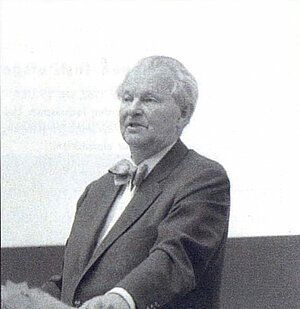January 30, 2018
1957

After the institute’s premises in Franklinstrasse had been completely destroyed in 1945, the HHI researchers – at the time operating under the name of Institute for Oscillation Research – found a temporary home in a building of the Technical University in Jebensstrasse 1 in the district of Charlottenburg. In the late 1950s, planning work began for a new building to house the Heinrich Hertz Institute. The architect Carl-Heinz Schwennicke was commissioned for the design. The 15-story building, located on Einsteinufer, was completed in 1968. Opening festivities were held to celebrate the institute’s new home.
The first concrete discussions about a new building for the Heinrich-Hertz-Institut were held in November 1957. In a department head meeting, senior government official Bähr informed the attending staff that the intended site would soon be available and that the Federal State of Berlin would contribute 20 percent of the construction costs. A year later the TU Berlin’s building committee asked the institute’s funding bodies to design a layout for the new building. Carl-Heinz Schwennicke, who held a professorship in the TU’s Faculty of Civil Engineering and who had overseen the reconstruction of the destroyed Bellevue Palace in the immediate postwar years, was commissioned as architect.
The foundation stone was laid on April 27, 1964 – which was followed by a “social evening get-together in the offices of the rectorate of the TU Berlin-Charlottenburg”, as promised by the invitation cards. A model of the planned building was also on display. A press release published at the time gave the cost of construction and equipment of the new building as 15.7 million Deutsche Mark. A federal grant made the financing possible.
In February 1968, the departments, now numbering six with the addition of the departments Information Processing and Control Engineering, began moving in. Once the relocation was completed, the opening festivities were held on May 24, 1968, followed by a scientific colloquium the next day. As a Berlin daily newspaper reported, the official opening saw “leading figures” from science, industry and politics gather to admire at the 15-story high-rise with the “distinctive radome sphere”.